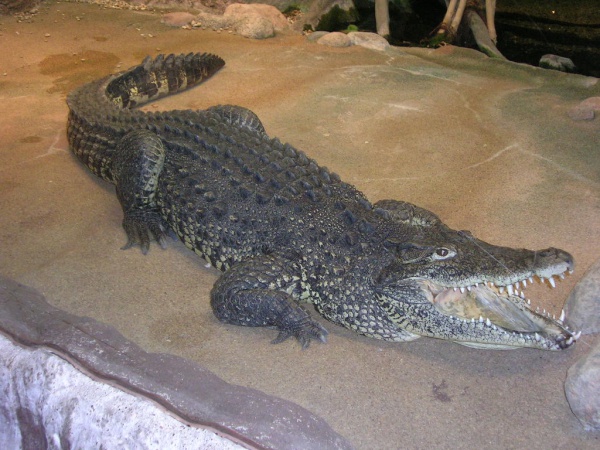Facts About Cuban crocodile
The Cuban crocodile is a captivating yet critically endangered species endemic to Cuba. These crocodiles typically range from small to medium size, measuring between 2.1 and 2.3 meters (about 7 to 7.5 feet) in length and weighing around 70 to 80 kilograms (154 to 176 pounds). However, the largest males can grow up to 3.5 meters (11.5 feet) and weigh over 215 kilograms (474 pounds). Known for their aggressive disposition, they can pose a danger to humans.
Biologists are particularly interested in the Cuban crocodile because of its distinctive physical and behavioral characteristics. Unlike other crocodiles, it is the most terrestrial, meaning it spends a significant amount of time on land. These crocodiles inhabit freshwater environments such as marshes and rivers. Adults primarily feed on fish, turtles, and small mammals, while the younger ones consume invertebrates and small fish.
Unfortunately, the Cuban crocodile is listed as Critically Endangered. Its habitat has diminished significantly, now restricted to the Zapata Swamp and the Isle of Youth in Cuba, primarily due to human hunting. To combat this decline, captive breeding programs have been initiated to help the species recover. Historical records indicate that these crocodiles once had a much broader range, including the Bahamas, Dominican Republic, and Cayman Islands.
The Cuban crocodile is easily identifiable by its bright coloration, rough scales, and long legs. It also exhibits unique behaviors, such as potential pack-hunting and cooperative hunting, especially in captivity. These crocodiles are known for their jumping feeding techniques, which they use to catch small mammals, fish, and turtles. Reproduction occurs from May to July, with females laying 30 to 40 eggs. The eggs incubate for 58 to 70 days, and the sex of the offspring is determined by the nest temperature.
Conservation efforts are crucial for the survival of the Cuban crocodile, which faces threats from habitat loss and hunting. Captive breeding programs in various countries aim to boost their numbers. Notably, two Cuban crocodiles at Sweden's Skansen Aquarium, which were once owned by Fidel Castro, have successfully contributed to breeding efforts. Due to the US embargo against Cuba, American zoos find it challenging to acquire Cuban crocodiles legally, making those from the Skansen Aquarium highly sought after.
